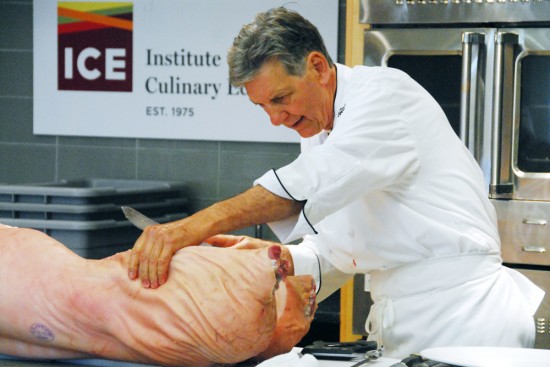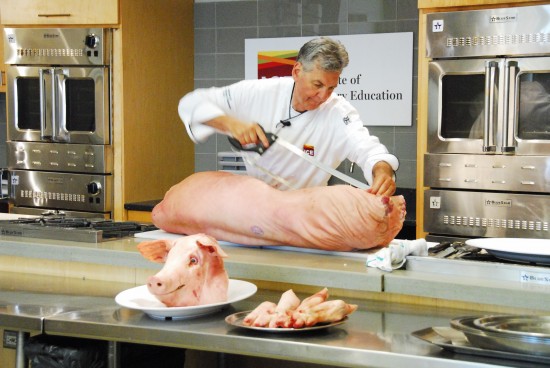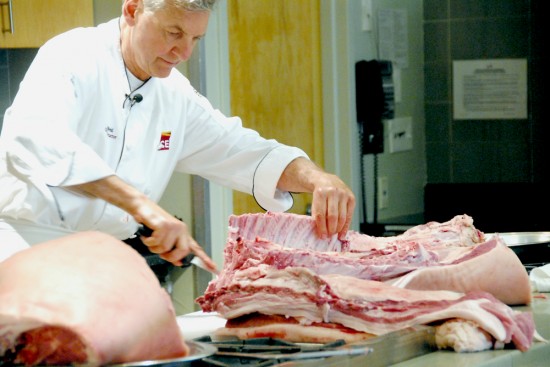ICE students were recently treated to a rare demonstration of "whole hog" butchery, as Master Butcher Rudi Weid broke down an entire 150-pound pig into primal and individual cuts in real time. Today, most animals are processed with industrial band saws at meat packing plants, but Rudi only used very sharp knives, a hand saw and a lot of elbow grease to expertly strip away skin and bones to leave neat piles of roasts, chops, and ribs ready for cooking.

While interest in nose-to-tail cooking and whole animal butchery has exploded in the last decade, there are many factors for a chef to consider when using whole animals. For pork, typically only the tenderloin cuts (which can be cooked to order) are featured on menus. The other 90% of the animal results in harder-to-sell tough cuts and “unusable” waste. For example, cuts from the shoulder and leg are delicious but require long, slow cooking methods or time-consuming transformations into terrines and charcuterie. To further educate students about the technical and flavor differences between tender and tough cuts, Rudi served grilled loin and rib chops alongside slow-braised pork belly.

Yet despite the popularity of whole animal butchery, the average restaurant or food business rarely has the time, space and in-house expertise to be able to utilize and sell an entire animal—although, happily, more and more are trying. The price of pork has also seen a steep incline with the spread of the PEDV virus, which killed seven million piglets in 2013. The increasing costs of the most in-demand cuts, such as pork belly or chops, will soon force chefs to find new ways to sell less expensive cuts to customers, such as grinding shoulders for sausages or even roasting pig heads for more adventurous eaters.

For a long time, it seemed the industry no longer needed the skills of artisanal butchers, but these circumstances have underscored the value of Weid's third-generation skills. With the increased interest in the craft of butchering by hand and growing media coverage of "celebrity butchers", there has never been a better time to share these traditional skills with our students. Whether they go on to incorporate this knowledge into their future food businesses—or even opt to work full-time in the field of fabrication—we look forward to welcoming a new generation of sustainability-savvy chefs!
For more information on lectures and demonstrations at ICE, click here.




